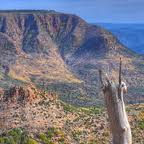As the epfitas do not keep contact with the ground many times possess nutrition problems. It swims remove of the trees only search a bigger luminosity and still animal polinizadores repay the shelter attracting, as the kiss-flower. In recent months, muscular dystrophy has been very successful. In the trunks where the waters of rains flow off quickly, the epfitas had had that to adapt the periodic droughts, exactly living in a humid environment. Bromlias possesss leves that form a water reservoir, in the form of a cup. In these aquatic reservoirs seaweed can live, protozorios, worms, lesmas and until pererecas constituting a small community.
The orqudeas, cactceas keep in its succulent leves the water that need for the survival. Among the legends that surround local history, it is distinguished Iara (the Iara word is of aboriginal origin. Yara means ' ' that one that deferred payment in gua' '). Also known as ' ' mother of guas' ' , Iara is a personage of the Brazilian folklore. In accordance with the legend, of aboriginal origin, Iara is a sereia (body of woman of the waist for top and of fish of the waist for low) brown of black hair and eyes chestnuts. The legend counts that the pretty sereia is in the rivers of the north of the country, where costuma to live.
In the rocks of the hillsides, costuma to attract the men with its beautiful irresistible I sing. victims costumam to follow Iara until the deep one of the rivers, place of where never more comes back. The few that obtain to come back finish being wild in function encantamentos them of the sereia. In this in case that, it counts the legend, a ritual carried through for one paj (aboriginal religious head, healer) only can exempt the man of the witchcraft. It enters the animals of the fauna gifts, is distinguished; urubu Sarcorhamphus Cathartidae; garas (cuciniformes birds); true chorale (Micrurus coralinus); tei (Tupinambis teguixin); lagartixa-of-sand (Acanthodactylus erythrurus); mother-da-moon (Nyctibius aethereus); true buzzer (Sporifilas falcirostis); bacurau (Nictidromus albicollis); caramujos (Basommatophora).



